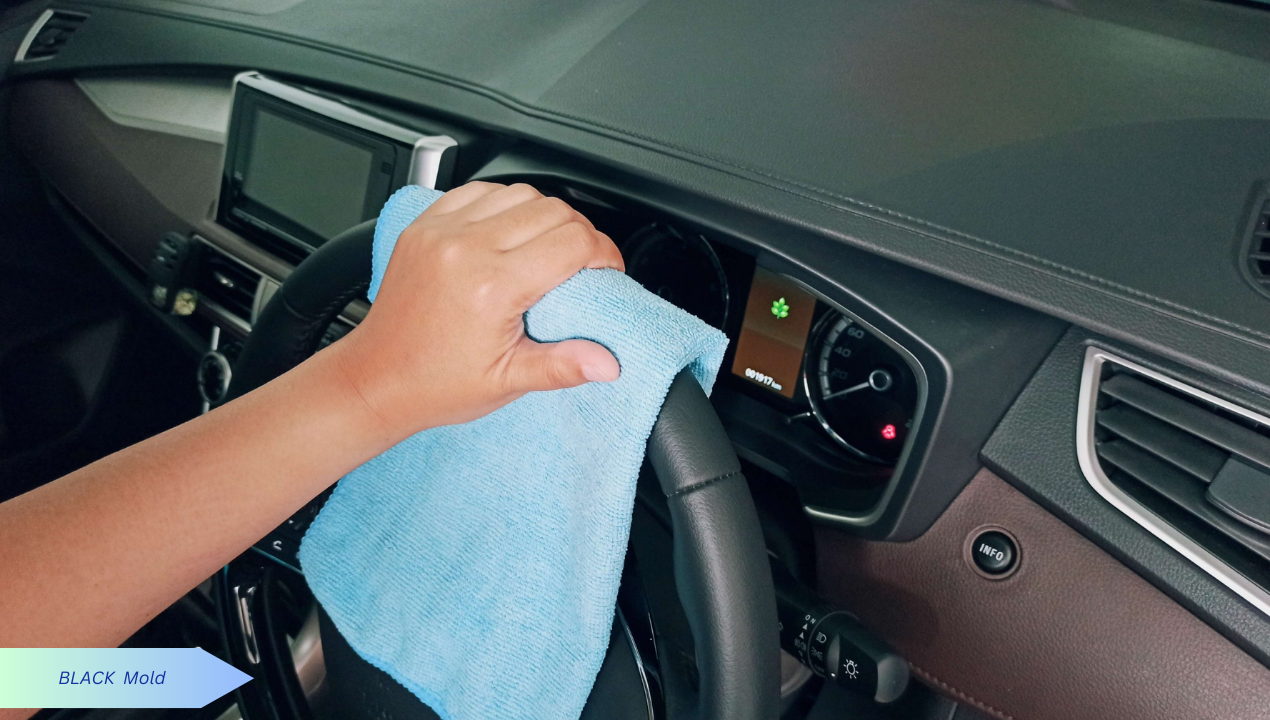Mold growth in car interiors can be a common yet troubling issue for many vehicle owners. It not only affects the aesthetics of the car but also poses health risks if left unchecked.
Understanding how to effectively remove mold from your car interior is crucial for maintaining a clean and healthy environment.
Mold in Your Car
Before you can tackle mold removal, it’s essential to identify whether your car has a mold problem. Signs of mold growth may include musty odors, visible patches of mold on surfaces, and the presence of moisture or dampness in the car.
Mold tends to thrive in areas with poor ventilation and high humidity, such as floor mats, carpets, and upholstery.
Safety Precautions Before Removal
Prior to beginning the removal process, it’s important to take necessary safety precautions. This includes wearing protective gear such as gloves, a mask, and goggles to prevent exposure to mold spores. Additionally, ensure adequate ventilation by opening windows or doors while working on the car.
Materials Needed for Mold Removal
To effectively remove mold from your car interior, you’ll need the right materials and tools. This may include specialized cleaning agents designed to kill mold and prevent its regrowth, as well as brushes, sponges, and microfiber cloths for scrubbing and wiping down surfaces.
Step-by-Step Guide to Remove Mold
- Preparation Steps: Start by removing any items from the car interior and vacuuming up loose debris.
- Cleaning the Affected Areas: Apply the chosen cleaning agent to mold-infested areas, ensuring thorough coverage. Use a brush or sponge to scrub the surface and loosen the mold.
- Drying Out the Car Interior: After cleaning, allow the interior to dry completely to prevent mold from returning. This also involve using fans to speed up the drying process.
Preventive Measures to Avoid Future Mold Growth
Once you’ve successfully removed mold from your car interior, it’s important to take preventive measures to avoid recurrence. This includes establishing a regular cleaning routine to prevent the buildup of dirt and moisture, as well as keeping the car well-ventilated to reduce humidity levels.
Professional Help vs. DIY
In some cases, mold removal may require professional assistance, particularly if the infestation is extensive or if there are underlying issues such as water damage. However, for mild cases of mold growth, DIY methods can be effective with the right tools and techniques.
Conclusion
Removing mold from your car interior is a task that requires prompt action and attention to detail. By following the steps outlined above and taking preventive measures to avoid future mold growth, you can ensure a clean and healthy environment inside your vehicle.
FAQs
- Can mold in my car interior make me sick?Yes, prolonged exposure to mold can cause respiratory issues and allergic reactions in sensitive individuals.
- How often should I clean my car interior to prevent mold growth?It’s recommended to clean your car interior regularly, at least once every few weeks, to prevent the buildup of dirt and moisture.
- What should I do if mold keeps coming back despite cleaning?If mold continues to reappear, it may indicate an underlying issue such as a water leak or excessive humidity. Consider seeking professional help to address the root cause.
- Can I use household cleaning products to remove mold from my car?While some household cleaning products may be effective against mold, it’s best to use specialized cleaners specifically designed for mold removal in cars.
- Is it safe to drive my car immediately after removing mold?It’s advisable to allow the car interior to dry completely before driving to prevent the spread of mold spores and ensure a safe and healthy environment for occupants.
